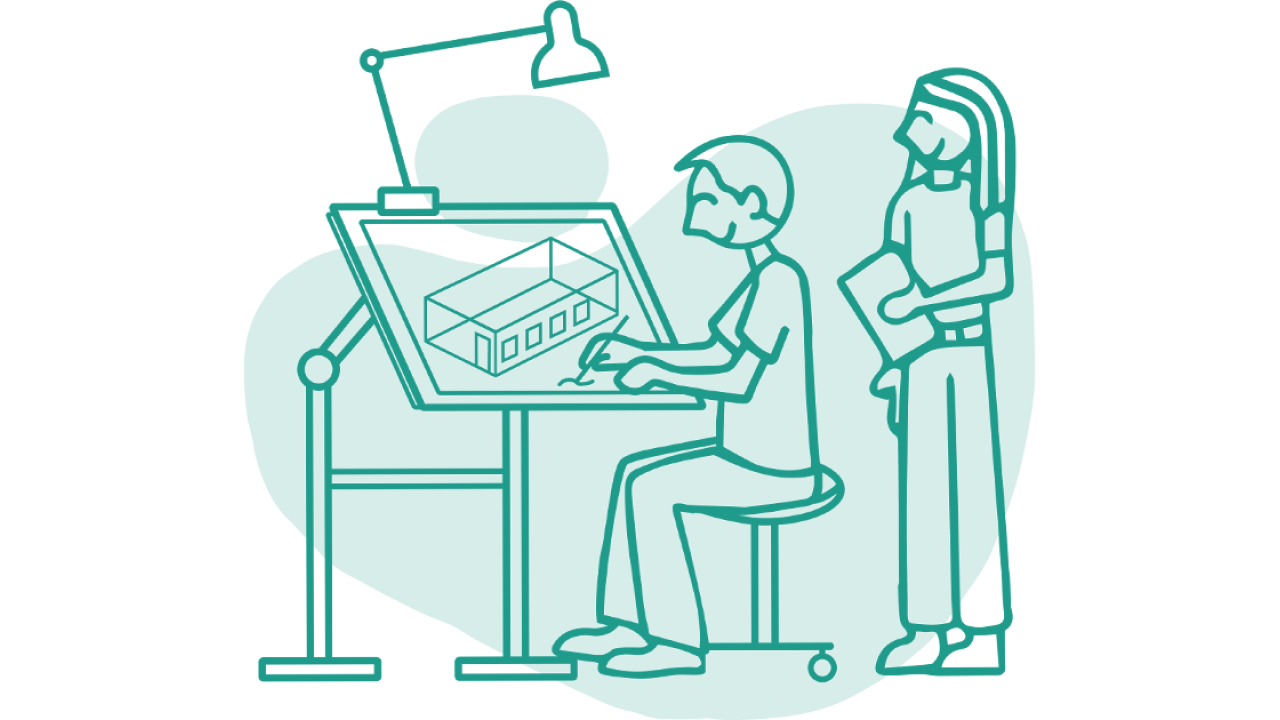
Reading, writing, and...energy modeling?
Energy modeling software is a tool for architects, engineers, and building operators to make accurate, energy-saving decisions on new and existing buildings. When starting a building project, the team establishes a baseline for performance based on the energy code; the energy modeling software simulates (and re-simulates) the structure of the building’s energy system by combining energy conservation measures.
Though the increased energy efficiency from energy modeling has many benefits for a building project, energy modeling software can be complex, expensive, and time-consuming. It also often comes with a significant learning curve.
Enter Sketchbox
In Summer 2022, Slipstream rolled out Sketchbox to simplify the energy modeling process. One of our goals was to make modeling more accessible to industry practitioners.
During the launch of Sketchbox, the Slipstream team had an “aha” moment: the tool could be used to educate students about energy modeling while also introducing them to various clean energy careers. Could this help meet the demands of a growing workforce?
Educators expressed interest in Sketchbox for many reasons — it’s free, it’s supported on devices such as Chromebook, and it uses a web interface. All helpful features to get software in students' hands.
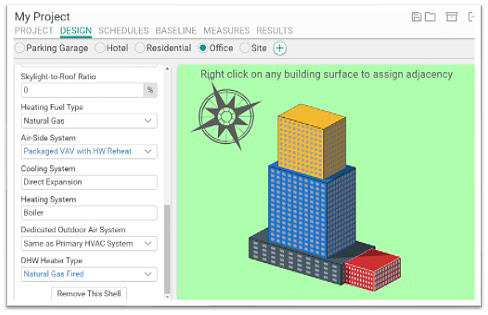
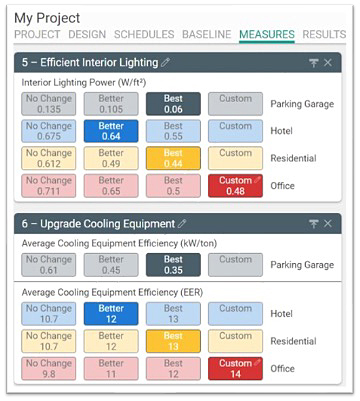
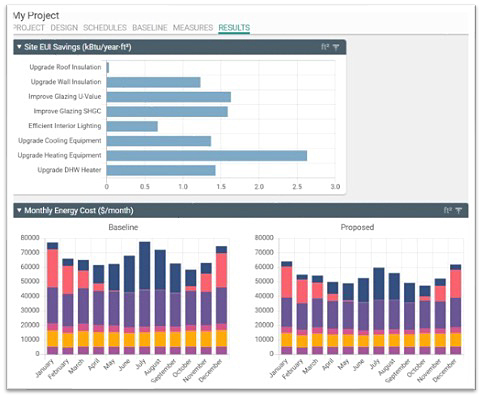
Roll Call! Getting Sketchbox in the classroom
Here we highlight a few initiatives where we took Sketchbox to the classroom and partnered with various educators to enhance lessons in energy modeling.
Texas A&M University
Through a U.S. Department of Energy (DOE) grant, Slipstream partnered with Texas A&M University to develop a smart buildings curriculum that included a demo of Sketchbox. The university thought Sketchbox would serve as a great introduction to building simulation and would be a valuable tool to include in the project.
Texas A&M is currently piloting Sketchbox in the classroom and recently invited Slipstream to observe students as they presented case studies while utilizing the tool. The feedback has been extremely positive, and upon completion of the curriculum, Slipstream will have the opportunity to share these experiences with architectural and engineering schools across the country.
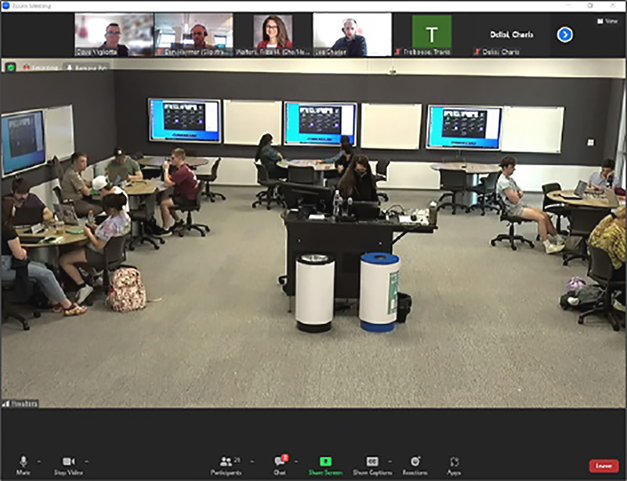
Virginia Tech University
Professor George Reichard is the department head of building construction at Virginia Tech University and past president of the Society of Buildings Science Educators (SBSE), so he knows a lot about building design. He is also one of our partners in the DOE smart buildings curriculum project. Professor Reichard has been developing lessons on Sketchbox to help teach students about net-zero building design and has offered to share his lessons with Texas A&M and his curriculum with SBSE members.
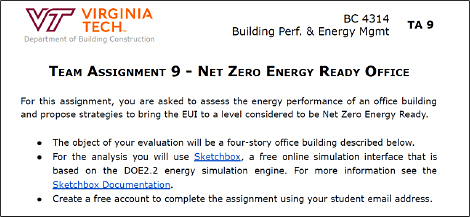
Wisconsin’s K-12 Energy Efficiency Program (KEEP)
Slipstream received a grant from Xcel Energy to partner with Wisconsin’s K-12 Energy Efficiency Program (KEEP) to help identify opportunities for developing energy modeling lessons for Sketchbox aimed at high schools and technical colleges in Wisconsin.
Through Slipstream’s partnership with Northeast Wisconsin Technical College, Slipstream was introduced to the Center for Renewable Energy Advanced Technological Education (CREATE). CREATE is a multi-year National Science Foundation initiative led by Madison College to develop energy efficiency and renewable energy curriculum for high school and technical colleges in the U.S.
At the technical college level, we submitted a presentation abstract to the Midwest Renewable Energy Association’s “Energy Fair” to continue awareness about Sketchbox to educators. Additionally, Slipstream attended the Wisconsin Tech Ed Association Annual Conference in March to introduce Sketchbox to tech ed educators.
At the high school level Slipstream and CREATE partnered with Jim Reichling, a physics teacher at La Follette High School in Madison, to pilot Sketchbox in his class — the first to be offered to high school students.
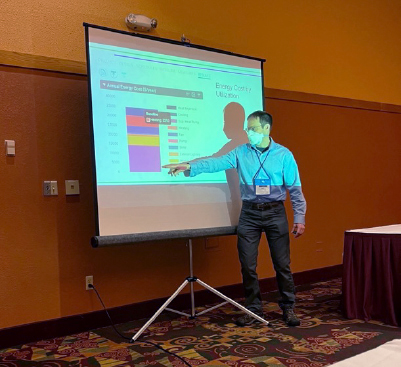
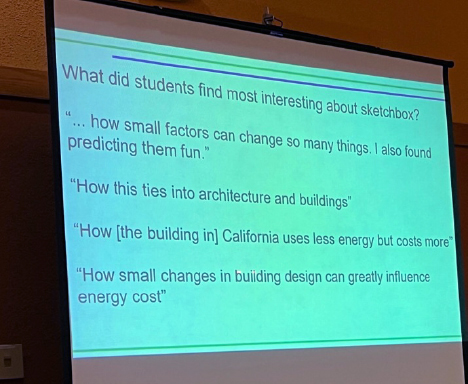
Calling all Wisconsin educators:
|
|
On July 20, 2023, we hosted a free professional development workshop on how to use Sketchbox as a teaching tool. To learn more, see the page about the event in our Continuing Education course catalog. |
Why Sketchbox?
Sketchbox is ideal for individuals teaching construction, HVAC, sustainability, math, science, physics, or computer science courses. Lessons include model inputs and reports, a guide to working with building energy codes, and building setpoints and controls. The platform is ideal for students exploring building science and various careers, including architecture, engineering, sustainability, building operations, facility management, construction management, and more.
So far, the feedback from educators and students has been extremely positive. You might say Sketchbox gets an A+.